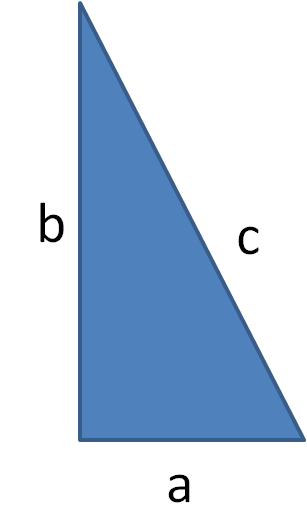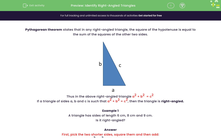Pythagoras' theorem states that in any right-angled triangle, the square of the hypotenuse is equal to the sum of the squares of the other two sides.

Thus in the above right-angled triangle a2 + b2 = c2
If a triangle of sides a, b and c is such that a2 + b2 = c2, then the triangle is right-angled.
Example 1
A triangle has sides of length 6 cm, 8 cm and 9 cm.
Is it right-angled?
Answer
First, pick the two shorter sides, square them and then add:
62 + 82 = 36 + 64 = 100
Then square the longest side:
92 = 81
So 62 + 82 ≠ 92 and the triangle is therefore not right-angled.
Example 2
A triangle has sides of length 5 cm, 13 cm and 12 cm.
Is it right-angled?
Answer
First, pick the two shorter sides, square them and then add:
52 + 122 = 25 + 144 = 169
Then square the longest side:
132 = 169
So 52 + 122 = 132 and the triangle is therefore right-angled.
Don't worry too much if you feel unsure or overloaded with information.
We will work through ten questions together so that you feel super confident








